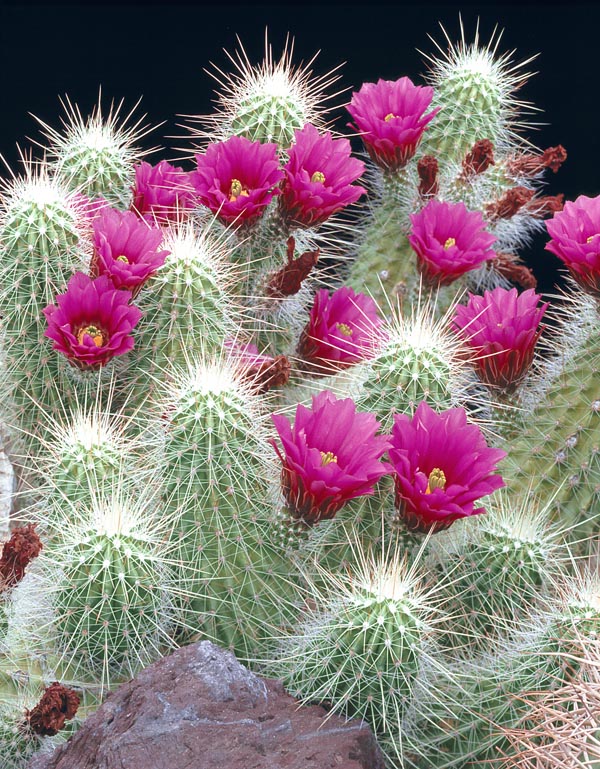Family : Cactaceae

Text © Pietro Puccio

English translation by Mario Beltramini

Native to the rocky Mexican slopes between 500 and 1800 m of altitude, Echinocereus longisetus forms sculptural tufts with showy 6 cm flowers. Good resistance to dry cold but fears winter humidity © G. Mazza
The Echinocereus longisetus Lem. (1868) is native to Mexico (Coahuila and Nuevo Leon), where it grows on rocky slopes between the 500 and 1800 m of altitude.
The name of the genus is the combination of the Greek word “echinos” = hedgehog, with reference to the globose shape of some plants belonging to the genus, and “Cereus”; the name of the species is the combination of the Latin words “longus” = long and “seta” = bristle, with reference to the thin long thorns.
Common names: “alicoche”, “banana cactus”, “pepino” (Spanish).
Plant with cylindrical stems with a pale green epidermis, which, in the wild, can reach the 50 cm of height and 8 cm of diameter.
The stems, which ramify at the base forming tufts with even 1 m of diameter, have 11-14 ribs with hinted tubercles with, at the apex, circular areolas provided with 16-20 white radial thorns, the lower ones 1-1,5 cm long, the upper ones, shorter, and 4-9 whitish central thorns similar to bristles, the upper ones just longer than the radial thorns, the lower ones, straight or bent and pointing downwards, long up to 8 cm.
The flowers are funnel-shaped, of about 6 cm of length and diameter, of purple pink colour and originate from the one year old areolas, therefore rather distant from the apex.
The fruits are globose, greenish, and contain several brown seeds. It reproduces by seed and by division.
Somewhat little cultivated plant, in spite of the beauty of its flowers, the velocity of growth and the facility of cultivation.
It is to be kept in full sun, or anyway at the maximum possible luminosity, on particularly draining soils which can be formed for about the 50% by common manure garden earth and for the rest, in equal proportion, by sand (agri-perlite) and crushed stones without dust. It has a high resistance to the dry cold, as it can bear, for short time, temperatures as low as -10 °C, but not the humid cold which can easily cause rottenness.
In the climates characterized by humid winters, therefore, it is to be sheltered and kept dry at temperatures between the 6 and 10 °C; this resting period, cold and dry, is also indispensable for a good blooming. In summer, it is to be regularly watered, but allowing the mould to dry up completely before giving water again.
The plant is inscribed into the appendix II of the CITES (plant whose trade is ruled at international level).
Synonyms: Cereus longisetus Engelm. (1856).
